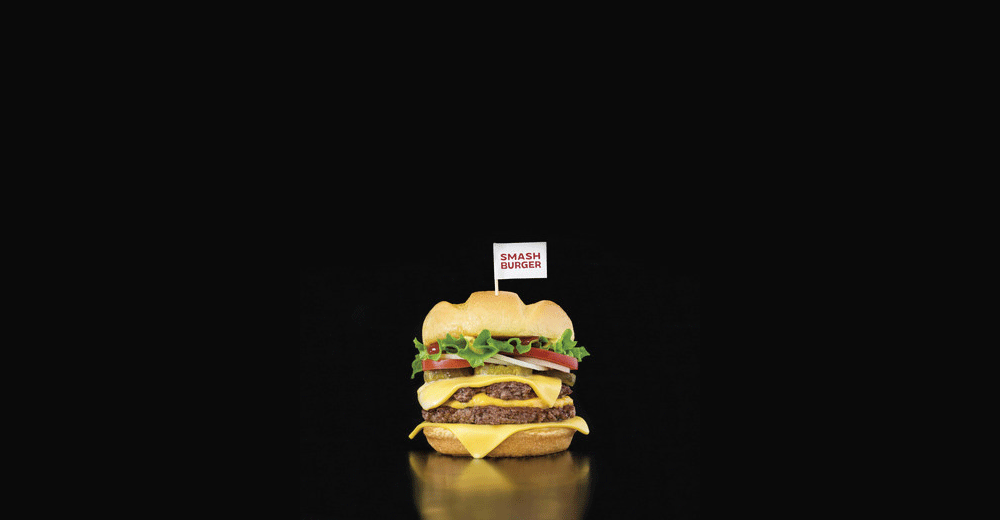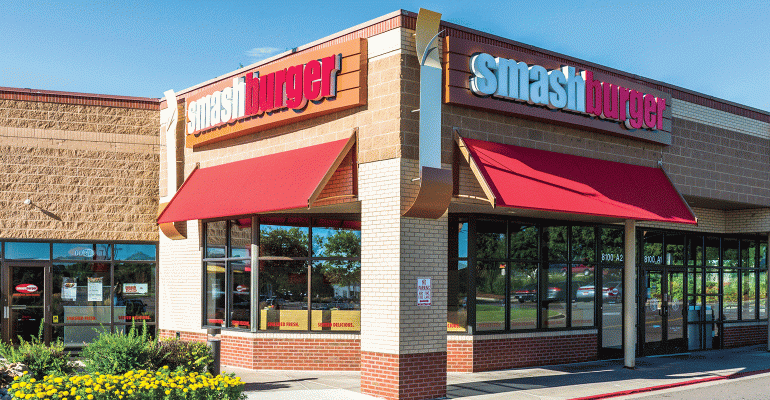Smashburger CEO Tom Ryan sat in one of his company’s restaurants in suburban St. Paul, Minn., and started an hour-long conversation about the state of the restaurant industry, and the chain he founded, by being brutally honest.
The political environment, he said, has hurt dinner occasions as more people have stayed home, glued to CNN. The weak retail environment has likewise kept people at home. Meanwhile, the biggest restaurant chains are going full guns in response. All this, he said, has hurt smaller chains like his.
“We’ve had to do some crazy things to drive traffic,” Ryan said.
Indeed, it has.
Smashburger has developed new burgers, focused on value, shifted workers around, began advertising on television and other media, and has employed new technology, all in an effort to get customers through the door. It is also renegotiating some leases and changing the way it expands the business.
Ryan said that he believes these efforts have worked, helping to improve sales through increased traffic this summer.
“It’s a quiet turnaround,” he said.
A McDonald’s Corp. veteran, Ryan co-founded Smashburger with former Quiznos owner Rick Schaden in 2007. The chain grew rapidly, even through the Great Recession, as part of a generation of so-called “better burger” chains that burst onto the restaurant scene.
But same-store sales growth at its 370 U.S. locations has been harder to come by in recent years amid intense competition both from newer entrants and from existing chains. While Smashburger’s overall growth has continued to flourish — system sales increased 10 percent last year and more than 19 percent the year before, according to NRN Top 100 data — unit volumes have stumbled. Estimated unit sales declined two of the past three years.
Meanwhile, Smashburger was experiencing upheaval in the C-suite. Ryan took over as CEO in December of last year, making him the company’s third chief executive in 2016 alone, following the nine-month tenure of Mike Nolan, who replaced Scott Crane the previous April.
Ryan reorganized by putting “aces in places,” a strategy that shifted star managers into important markets to ensure improvement. That includes Minneapolis, one of Smashburger’s biggest markets, where Ryan visits routinely as part of a new mentorship program involving top executives and managers in specific markets.
The Denver-based fast-casual chain has also condensed its expansion strategy, focusing on existing markets where Smashburger can build a critical mass so it could start advertising on television. It also renegotiated some of its leases.
“It’s a very precarious landscape,” Ryan said. “You need to adopt a different point of view.”
Once the structural efforts were done, Ryan said the company “turned on the juice” in June.
In July, Smashburger began selling a Triple Double burger, with two layers of beef and three layers of cheese, which Ryan said he hopes can become the chain’s signature product.
The burger’s notable for three things: it didn’t include the prefix “Smash,” it’s promotionally priced at $4, and it prompted a lawsuit from In-N-Out.
Ryan wouldn’t talk specifically about the lawsuit, except to say, “We thought it was fair game.” But it’s also fair to point out that Smashburger hardly seemed upset by the action at the time, given that it sent out a press release about the lawsuit shortly after it was filed.

Value matters
One of the bigger problems in the fast-casual sector is price, and Ryan believes that such chains need to focus on ensuring that they can be affordable.
Whatever the reason, the Triple Double burger has been one of “the most significant products we’ve done,” Ryan said. One in five burgers Smashburger sells is a Triple Double. And the burger has also led to an increase in the number of side dishes customers order — to 80 percent of orders from 72 percent.
“It was a phenomenal jolt in the arm,” Ryan said, adding that the chain has gotten tons of traffic growth from it.
“Predictable value is something fast-casual chains need to address as we get bigger and attract more customers,” he added, noting that the company plans to keep its under-$5 options on the menu after the Triple Double returns to its regular price of $6.50.
Ryan pointed to a Burger King across the street offering two Whoppers for $6. “The big guys who all decided not to lose are doing some aggressive things,” he said.
The Triple Double wasn’t the only new product. Smashburger also introduced a turkey burger that it developed with a supplier. “I think we cornered the market on turkey fat,” Ryan said. It also developed Tater Tots.
Smashburger is now working with a company that helps market the chain to employers in areas where it has restaurants. It has also found music site Pandora to be a good ad vehicle in many smaller markets.
Ryan said the company is working on other strategies to generate sales, including delivery. And he promises other innovative ideas, which he would not yet reveal.
“It’s been a cathartic year,” he said. “But I love it. You’ve got to be more strategic.”
Contact Jonathan Maze at [email protected]
Follow him on Twitter: @jonathanmaze





